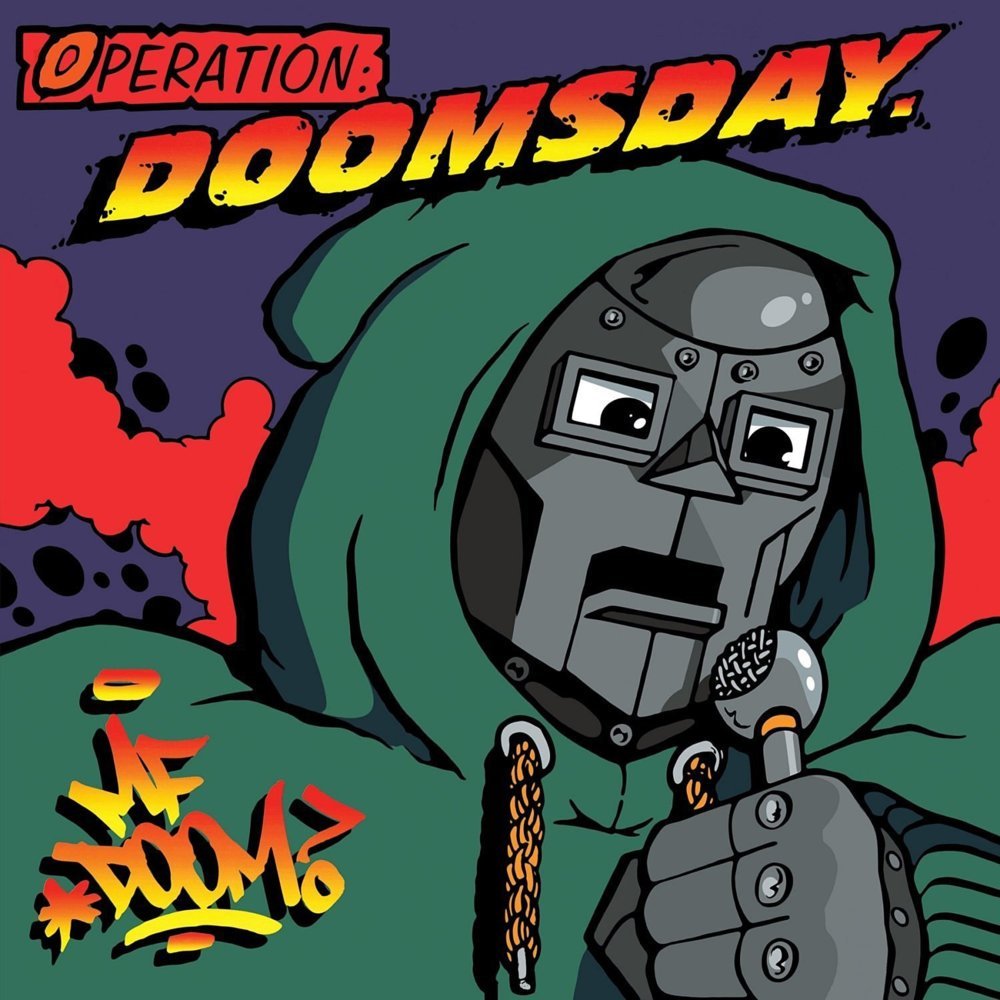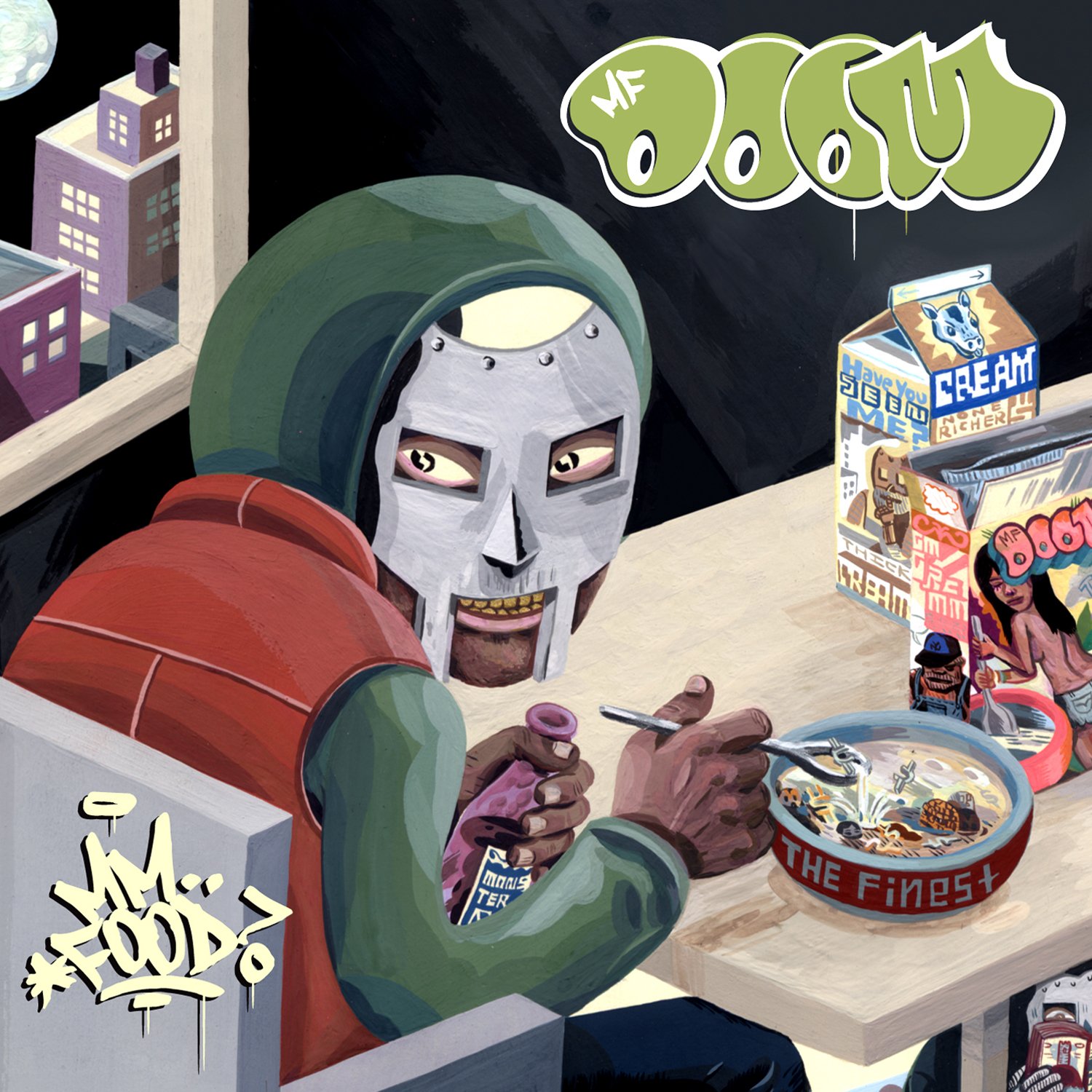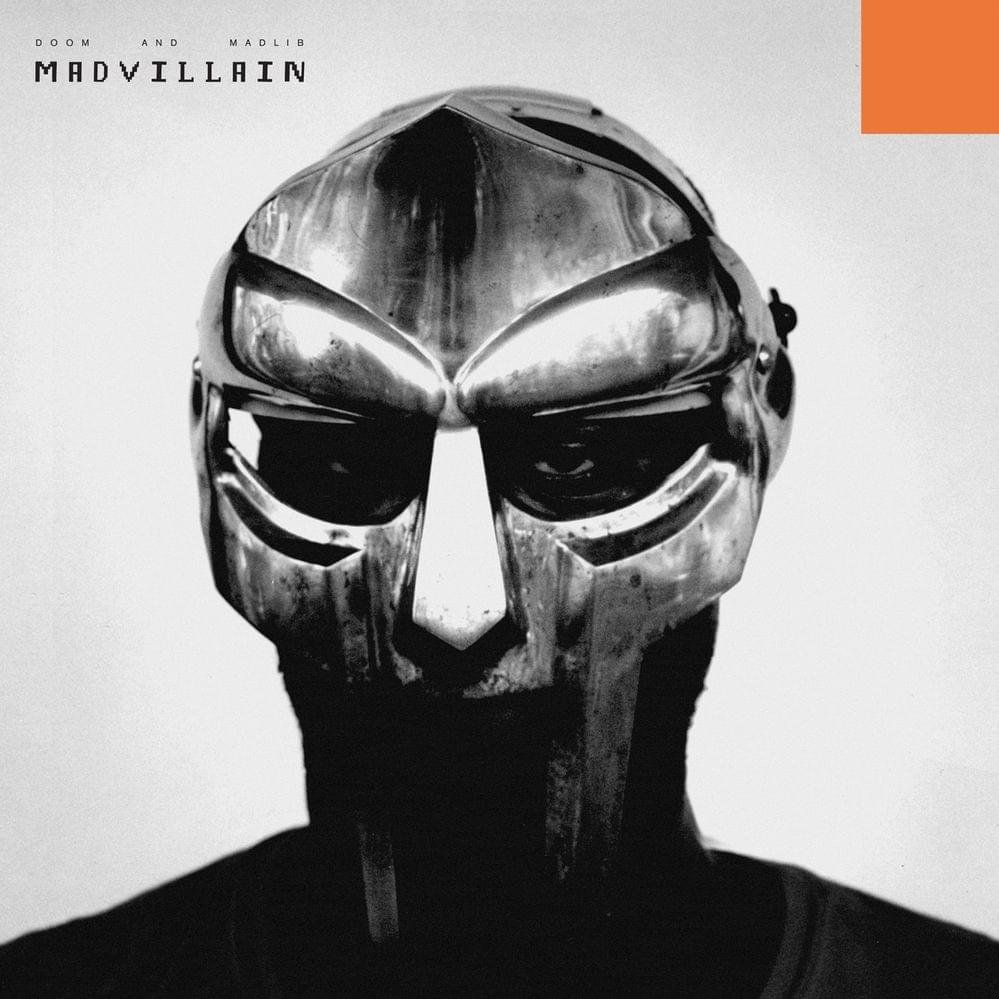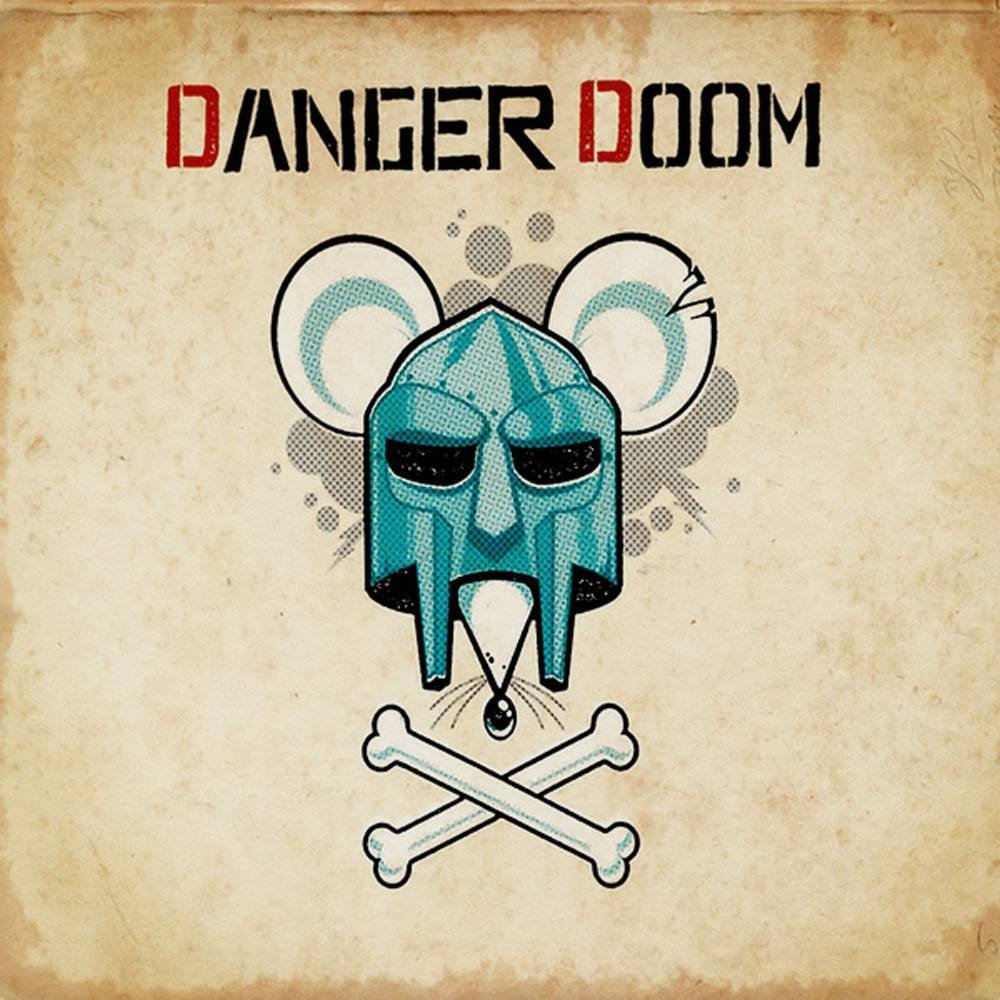Happy 20th Anniversary to Viktor Vaughn’s Vaudeville Villain, originally released September 16, 2003.
When Daniel “MF DOOM” Dumile released Vaudeville Villain 20 years ago, it was during his most prolific musical period. After relaunching his career in the late ’90s, he began churning out albums to keep his fans satisfied. Following the template that Kool Keith had set only a few years before, DOOM began fashioning different aliases and “characters” to record under, each with their own back story and ethos. With Vaudeville Villain, he created an album that sounded different from everything he recorded before and since.
Vaudeville Villain was released just over three months after Take Me To Your Leader, the project he released under the guise of King Geedorah. That album mostly showcased DOOM’s ability as a beat-maker; he produced it in its entirety, but only rapped on five songs. In contrast, DOOM, or Viktor Vaughn, is unquestionably the vocal star of Vaudeville Villain, but he raps solely over outside production.
For Vaudeville Villain, DOOM collaborated with Sound-Ink Records, a small electronic music label mostly active in the early ’00s. DOOM first worked with the label in 2001, contributing “Monday Night At Fluid” to the Colapsus compilation. The song featured a pair of DOOM verses (or rather, a verse from DOOM and another from King Geedorah) and an appearance by longtime brother-in-arms Kurious.
For this album, DOOM adopts the persona of Viktor Vaughn. The moniker is a play on a shortened version of Dr. Doom’s alter ego, Victor Von Doom. As a character, Viktor Vaughn is a young, brash street-hoodlum, navigating a cold, futuristic world with a chip on his shoulder. I’ll be using DOOM and Viktor interchangeably throughout this piece, even though they are indeed the same person.
Lyrically, Vaudeville Villain is one of DOOM’s better albums, in terms of cleverness, delivery, and presentation. For much of the album he utilizes the free-flowing, stream of consciousness approach to his rhymes. Much like his other projects, he fills his bars with references to cartoons and obscure New York-based TV programming. And much like his other projects, he doesn’t have much use for hooks or ever breaking up his verses into easily digestible 16-bar chunks. Instead he opts for delivering marathon verses that traverse nearly the entire length of the song.
On Vaudeville Villain, he works mostly with the label’s in-house producers, including Heat Sensor, Max Bill, and King Honey. The electronic influences in the album’s production are apparent, as tracks frequently combine soul, jazz, or rock samples with the trappings of electronic music circa 2003. The tracks even incorporate snippets of dialogue from vintage Spider-Man cartoons to make the album really feel like an authentic DOOM record.
DOOM sounds remarkably comfortable working with these three largely unknown beat-makers. The trio did not do much work outside of their collaborations with Sound-Ink, but here they create an often weird and disorienting production palette, replete with electronic buzzes, chirps, chimes and clangs. For his part, DOOM dives in headlong, navigating many different tempos and sounds.
Listen to the Album:
DOOM starts off Vaudeville Villain by charging across the title track, a frenzied and aggressive work backed by crackling electric guitars, piercing strings, and bellowing vocals. DOOM barrels through like he’s “doing 80 down the Van Wyck on horseback,” and treats wack emcees with utter contempt, rapping, “Viktor the director flip a script like Rob Reiner / The way a lotta dudes rhyme their name should be ‘Knob Shiner’ / For a buck, they'd likely dance the Jig or do the Huck-a-buck / To Vik it's no big deal, they’re just a buncha knuckle-fucks.”
DOOM seems unfazed rapping over increasingly odd musical fare. “The Drop” moves at a frenetic pace, punctuated by a bubbling, pulsing synthesizer and the sounds of rapid water drops. “Rae Dawn” is positively languid, as the keyboard-based track buzzes, hums, and chirps, while DOOM muses about his new drink, “named it after Chong’s daughter” (a.k.a. the titular Rae Dawn) a.k.a. a “triple-shot of ’Gac with a chaser of bong water.” The concoction sounds even more disgusting than Brass Monkey.
Meanwhile, “Pop Snot” has the sonic feel of a fever dream, filled with warbling, shimmering, and often stuttering keys. These are contrasted with pounding kicks, backward-masked vocals, and chunks of the bassline from Weather Report’s “Scarlet Woman.” Lyrically, it’s the most traditionally structured song on Vaudeville Villain, as DOOM kicks three separate verses, separated by a sparse “hook” of sampled vocals from EPMD’s “For My People.” The track even features a bridge and “horn solo.”
The Sound-Ink records crew also creates beats using more soul-based production, such as “Lickupon,” which features DOOM rhyming over the famous bassline from Isaac Hayes’ “Walk On By.” DOOM lends his stream of consciousness flow to the track, riffing, “On the microphone he came to daze and amaze ya / What a guy, practice banging flies with razors / And watch out for the robot, he got eyes with lasers / Tell ’em when they come with more topics besides blazers.”
“Dead Mouse” is built around an East Asian-influenced sitar and percussion sample, and is one of the more surrealistic tracks on Vaudeville Villain. It’s also probably the only hip-hop track ever recorded that features a rapper interacting with characters from Star Trek: Voyager while working in a reference to Back to the Future.
“Saliva” is the only track on Vaudeville Villain not produced by one of Sound-Ink’s in-house beat-makers, with RJD2 assuming duties behind the boards. Not coincidentally, it’s probably the closest the album gets to having a “traditional” MF DOOM track, with funky horns and rhythmic drums. DOOM/Viktor drunkenly bounces around the track like a pinball, rapping, “Holy Moses, my old earth know me closest / On how I played the back and stayed bent like scoliosis / It’s no puzzle, you can ask Doc Zizmor / The slow guzzle got your nizzle crooked like Biz’s jaw.”
Vaudeville Villain features more than just exercises in free association, as DOOM gets topical in his usual abstract and at times indecipherable way. “Lactose & Lecithin” details a drug deal gone wrong, while “Modern Day Mugging” is a close to three-minute tutorial on the finer points of techniques to use when robbing someone. “Let Me Watch,” featuring verses from Apani B. Fly, portrays both sides of a budding romance, as Viktor courts a virginal young woman with a troubled past. It captures the difficult dynamic where each party is expecting something different out of the relationship: Apani feels like she’s found her soulmate, while Viktor is just looking for a quick lay.
Enjoying this article? Click/tap on the album covers to explore more about MF DOOM:
“Never Dead” is the best song on Vaudeville Villain, as DOOM teams up with M. Saayid, Sound-Ink artist and member of the experimental hip-hop group Antipop Consortium. The track is a dark, bizarre, and convoluted exploration of high school life where violence, magic, and time-travel all co-exist. Saayid and DOOM first trade surreal verses, with Saayid proclaiming, “Cab to the school, straight to the bathroom / To take a piss then help the teacher with the creatures that inflated from the ethers” and DOOM rapping, “Nasty drop the rhyme like lime then tequila / Flippin’ like Optimus Prime to a ten wheeler / V set the scheme on his own team like Starscream / Then go hit the bar scene all like ‘Nah mean?’”
The two eventually team up to pursue a miscreant who’s stolen Viktor’s Donkey Kong game from his locker. Eventually the song takes a turn toward the oddly poignant as Viktor/DOOM reminisces about his late brother, DJ Subroc, rapping, “On the radio, ‘Mack the Knife’ / I watched him freeze roaches and bring 'em straight back to life / He used a different approach than I ever read / The only thing he ever said was, ‘The roach is never dead.’”
DOOM used the Viktor Vaughn character sparingly after Vaudeville Villain. “Viktor” made his next appearance on Madvillain’s “Fancy Clown” from the Madvillainy (2004) album. A little shy of a year later, Insomniac Records released a follow-up album/EP titled Venomous Villain, but it seemed like a phoned-in cash grab. The album featured roughly seven minutes of DOOM actually rapping, stretched over 12 tracks, over beats by Insomniac Records’ much less distinguished production team. DOOM used the Viktor Vaughn alias again a decade ago for “Between Villains," a solid collaboration with Captain Murphy (a.k.a. Flying Lotus), Earl Sweatshirt, and Thundercat.
Whatever DOOM was calling himself, he could do seemingly little wrong during this period. That Vaudeville Villain is the second of three outstanding albums that he released in less than a year speaks to the groove that DOOM had worked himself into. It also speaks to his dopeness as an artist that he could step outside of his “traditional” sound and still excel. Rappers who take chances aren’t always rewarded artistically and critically, but that’s part of what made the late DOOM such a great artist.
LISTEN:
Editor's note: this anniversary tribute was originally published in 2018 and has since been edited for accuracy and timeliness.





